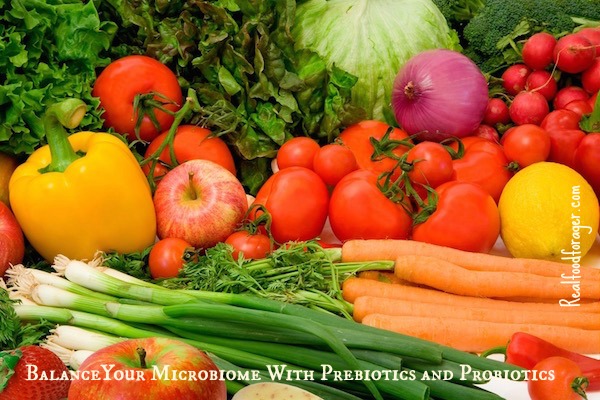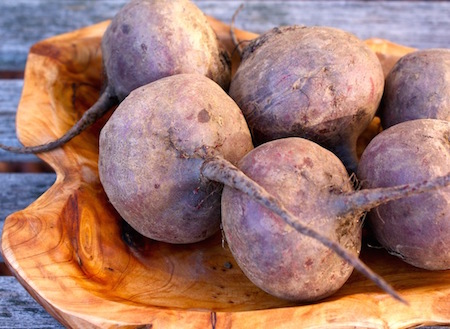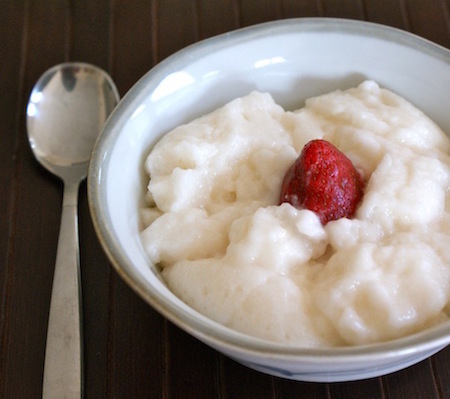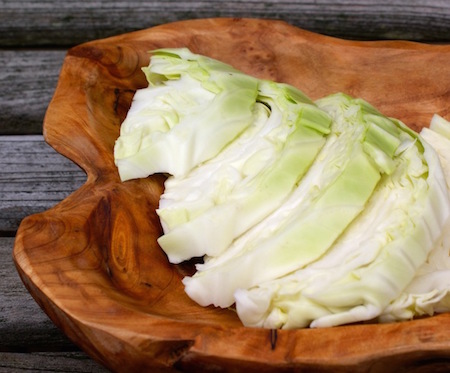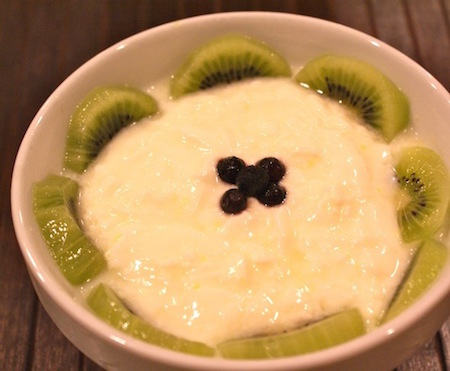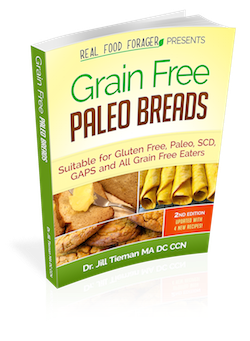Information about the critical importance of a balanced microbiome is becoming mainstream. Even some medical doctors are actually reading their medical journals and noticing the explosion in research on the human microbiome. Nutritionists have been talking about the beneficial bacteria for years and now we have the science to back up what we say.
We know that we can supplement the diet with probiotic foods like fermented vegetables and fermented dairy products. However, there is also new interest in prebiotic foods that are high in fiber and resistant starch.
What are Prebiotic Foods?
Much ado has been made for adding fiber to your diet to improve health in regards to diabetes, heart disease , cholesterol lowering (questionable value), cancer (also some find it protective, some not) and metabolic syndrome. While there are studies supporting these health claims, there are also studies that indicate that too much fiber can exacerbate certain conditions, such as, diverticulosis, constipation and mineral absorption in general (due to the phytic acid in many fibers).
When introducing more fiber into your diet you must go slowly.
Prebiotic foods have fiber. There are many kinds of fiber, i.e. soluble fiber, insoluble fiber and resistant starch (really just another name for insoluble fiber).
Soluble Fiber
Soluble fiber refers to naturally occurring fibers from oatmeal, oat cereal, lentils, apples, oranges, pears, oat bran, strawberries, nuts, flaxseeds, beans, dried peas, blueberries, psyllium, cucumbers, celery, and carrots.
This type of fiber is soluble in water and forms a gel in the intestines which slows down digestion. For some, this is a good thing as it delays the emptying of your stomach and makes you feel full, which helps control weight. It may also help with insulin sensitivity and thus help diabetics.
Insoluble Fiber
Insoluble fibers do not dissolve in water, but pass through the digestive tract. This serves to bulk up the stools and help with constipation. It also increases the motility of the digestive tract.
Food sources of insoluble fiber are whole wheat, whole grains, wheat bran, corn bran, seeds, nuts, barley, couscous, brown rice, bulgar, zucchini, celery, broccoli, cabbage, onions, tomatoes, carrots, cucumbers, green beans, dark leafy vegetables, raisins, grapes, fruit, and root vegetable skins. (source).
Added fiber is recognized by officials to benefit human health in three ways:
- Fiber helps to keep blood glucose steady by binding with fatty acids and slowing digestion so blood sugars are released more slowly into the body.
- Fiber helps to reduce risk of coronary artery disease by lowering bad cholesterol
- Fiber improves regular bowel movements by hydrating, controlling pH levels and moving waste through the intestines.
The suggested daily fiber intake is 25 to 38 g for adolescents and adults. It is estimated that most people fall short of that with less than 15 grams a day.
Resistant Starch
Resistant starch is starch that is resistant to human digestion so it ends up in the colon where the bacteria can feed upon it. In this way, resistant starch directly supports the colonic microbiome and is thought to foster diversity.
Find out why I added resistant starch to my diet.
What are Safe Starches?
Safe starches is a term coined by Dr. Paul Jaminet in his book, written with his wife, Dr. Shou-Ching Jaminet, called The Perfect Health Diet. In this book, Drs. Jaminet outline a diet that resembles the Paleo diet but also allows for more carbohydrates like sweet potatoes, white potatoes, tapioca, root vegetables and white rice (white rice is not allowed on Paleo).
From a traditional standpoint, this diet makes a lot of sense as many traditional cultures have been eating root vegetables, potatoes and rice for thousands of years, along with clean animal fats and animal proteins.
Dr. Jaminet cured himself of a very persistent and chronic illness with this diet. If you are ready to come off SCD or GAPS, I highly recommend their book.
Read more about the issues around fiber here.
Good Bacteria Need Fiber
Another important concept is that pathogenic bacteria survive by feeding on the byproducts of inflammation (becoming a vicious cycle), yet the good bacteria survive on fermentation of fiber.
This suggests that you should eat fiber (and possibly resistant starch) to feed the good bacteria. I would imagine that it is possible, after months or a year or two on the SCD/GAPS, or low carb diets, to transition to a more fiber rich diet in order to nourish the good bacteria.
Interestingly, in this study published in Science in 2013 scientists have revealed that in IBD, where there is inflammation already, bacteria like Enterobacteriaceae (including some E. coli strains) use nitrate to survive. The nitrate is present when there is inflammation in the intestine. Lead author Andreas Baumler, a professor of medical microbiology and immunology at UC Davis said,
Much like humans use oxygen, E. coli can use nitrate as a replacement for oxygen to respire, produce energy and grow… In IBD, nitrate produced by inflammation in the gut allows E. coli to take a deep ‘breath,’ and beat out our beneficial microbes in the competition for nutrients… Determining the reasons why bacteria like E. coli can edge out good bacteria in the gut is crucial for determining new ways to halt the IBD disease process.
Well, there you go. This is exactly the concept the SCD and GAPS diets are founded upon. SCD and GAPS are engineered to starve out the bad bacteria, but plenty of the foods feed the good bacteria and the fermented foods provide bacteria that passes through the system, yet along the way, offer their benefits.
Many foods on the SCD, GAPS and Paleo diets are great sources of both soluble and insoluble fiber, such as yams and sweet potatoes, green leafy vegetables, carrots, winter squash and root vegetables, fruits with an edible peel (like apples and pears), berries, seeds, and nuts.
Jeff Leach of the American Gut project has been living in Tanzania for over a year and studying the Hadza. The Hadza are one of the few thriving and surviving hunter/gatherer tribes left on this earth. They have a lot of fiber in their diet and an amazingly diverse microbiome.
Current studies show that diversity is the key to a healthy microbiome. For good health in general and restoring a better ability to heal the gut, fiber is necessary.
Prebiotic foods provide fiber – eat plenty of root vegetables, onions, garlic, leeks, asparagus and resistant starch (if you are not on SCD or GAPS).
Probiotic foods are essential to any good diet.
Top Rebiosis Strategies
Fiber in the Diet
Fiber feeds the bacteria. Some people have conditions that prevent them from tolerating fiber (SIBO, certain individuals with IBD or IBS). There is a gray area here and some people will have to learn how to support the microbes without exacerbating a medical condition.
Find out about resistant starch here.
Heal the Gut
Microbiome barriers protect us from misfiring of the immune system. When there is barrier dysbiosis – leaky gut, leaky brain and leaky skin can develop. There are also microbial barriers in the lungs. The health of all these microbial barriers must be taken into consideration.
Treg cells dampen the hyper-immune response and are critical cells that help balance the immune response. The immune system can be healed back into balance.
Find out how to heal your gut and feel great in my e-book Heal Your Microbiome Optimize Your Health.
Top 7 Probiotic Foods
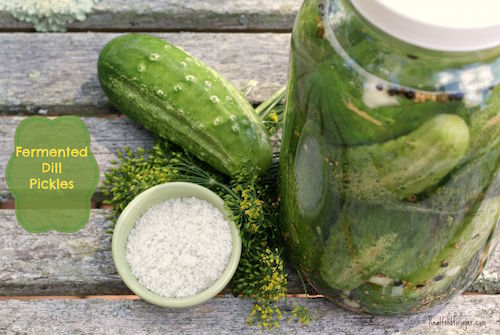
Fermented Dill Pickles
Lacto-Fermented Beet Kvass – Video
Coconut Milk Yogurt – Video
Fermented Cabbage Juice
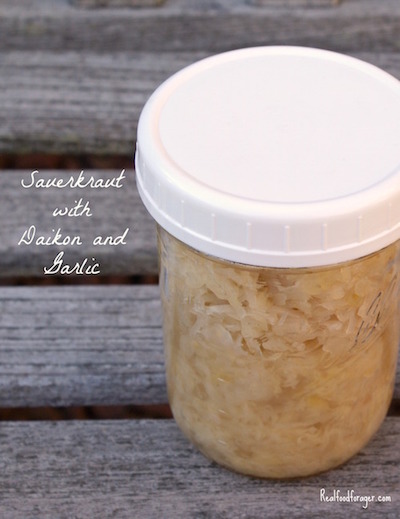
Sauerkraut with Daikon and Garlic

Pineapple Ginger Kombucha
Homemade Yogurt (SCD/GAPS) – Video

